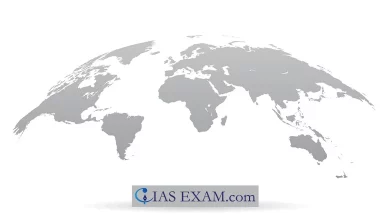Need of a Forward-Looking Strategy in Indo-Pak Relations
[GS Paper 2 – Bilateral Relations, India and its Neighborhood]
Context – India’s approach in dealing with Pakistan today is very different from the framework that emerged at the dawn of the 1990s.
Background: Indo-Pak Relations
- India and Pakistan have originated from a common subcontinent but after the partition of 1947, they have an unstable relationship due to many unresolved issues like Kashmir issue.
- The two countries had fought 4 wars in the past and currently there is no engagement between them at level of political leadership on account of terrorist attack motivated from Pakistan soil. Since both countries are nuclear capable therefore the cost of conflict will be very high, nothing short of mutually assured destruction.
Events in Recent Years
- 2014 – As a goodwill gesture all leaders of SAARC countries were invited to the swearing-in ceremony of the Prime Minister of India.
- 2014 – Both countries in New Delhi held talks expressing willingness to begin a new era of bilateral relations.
- 2015 – PM Modi makes a surprise visit to the Pakistani eastern city of Lahore.
- 2016 – Pakistani backed militants launched terrorist attack on armed forces base at Uri (J&K), in reaction to which India launches “surgical strikes” on “terrorist units” in Pakistan-administered Kashmir.
- After that India held that it will not engage with Pakistan diplomatically and that terror and talks can’t go together.
- 2019 – Again similar terrorist activity conducted in pulwama (J&K) against which India conducts air attacks in balakot training camp of Pakistan-based rebel group Jaish-e-Mohammad (JeM).
- However finalizing the Kartarpur corridor has shown a narrow ray of hope for starting talks between India and Pakistan.
India’s Engagement Terms with Pakistan
- From the 1990s, for nearly three decades, it was Pakistan that had the political initiative. The turmoil in Kashmir, the international focus on nuclear proliferation, and the relentless external pressure for a sustained dialogue with Pakistan put Delhi in a difficult situation.
- If Pakistan was on the political offensive, a series of weak coalition governments in Delhi were forced onto the back foot. At the heart of Pakistan’s ambition was to change the status quo in Jammu and Kashmir.
- Islamabad also played up to the concerns in Western chancelleries that the conflict in Kashmir might escalate to the nuclear level. The new international consensus that Kashmir is the “world’s most dangerous nuclear flashpoint” aligned well with Pakistan’s strategy.
- Delhi had no option but to respond, but any move to counter Pakistan would make the situation worse.
- Under Prime Minister Narendra Modi, India has begun to reset the terms of the engagement agenda. Meanwhile, the regional and international context has also altered in many ways since the early 1990s essentially in India’s favor.
Changes in Terms of Engagement
- India’s transformed relations with the US, the resolution of Delhi’s dispute with the global nuclear order, and getting the West to discard its temptation to mediate on Kashmir enormously improved India’s diplomatic position.
- But the most consequential change has been in the economic domain. The persistent neglect of economic challenges left Pakistan in an increasingly weaker position in relation to India.
- If India has inched its way into the top six global economies, Pakistan today is broke. PM Modi had the opportunity to build on these shifting fortunes of Delhi and Islamabad and develop a three-pronged strategy of his own.
- India bet that the heavens won’t fall if Delhi stops talking to Islamabad or negotiating with Pakistan-backed militant groups in Kashmir.
- Delhi has been unafraid of staring at nuclear escalation in responding to Pakistan’s cross-border terrorism.
- By changing the constitutional status of Kashmir in 2019, India has reduced the scope of India’s future negotiations with Pakistan on Kashmir.
Way forward and Conclusion
Pakistan’s hand today is much weaker than in the 1990s and Delhi’s room for maneuvering has grown, notwithstanding the challenges it confronts on the China border. That opens some room for new Indian initiatives toward Pakistan. Getting Pakistan’s army and its political class to be more practical in engaging India is certainly a tall order; but Delhi can afford to make a move.
While there can be much disagreement on Pakistan’s capacity to respond, Delhi’s new initiatives can reinforce the positive evolution of Indian foreign policy, and expand the space for Indian diplomacy in the region and beyond.





.png)



